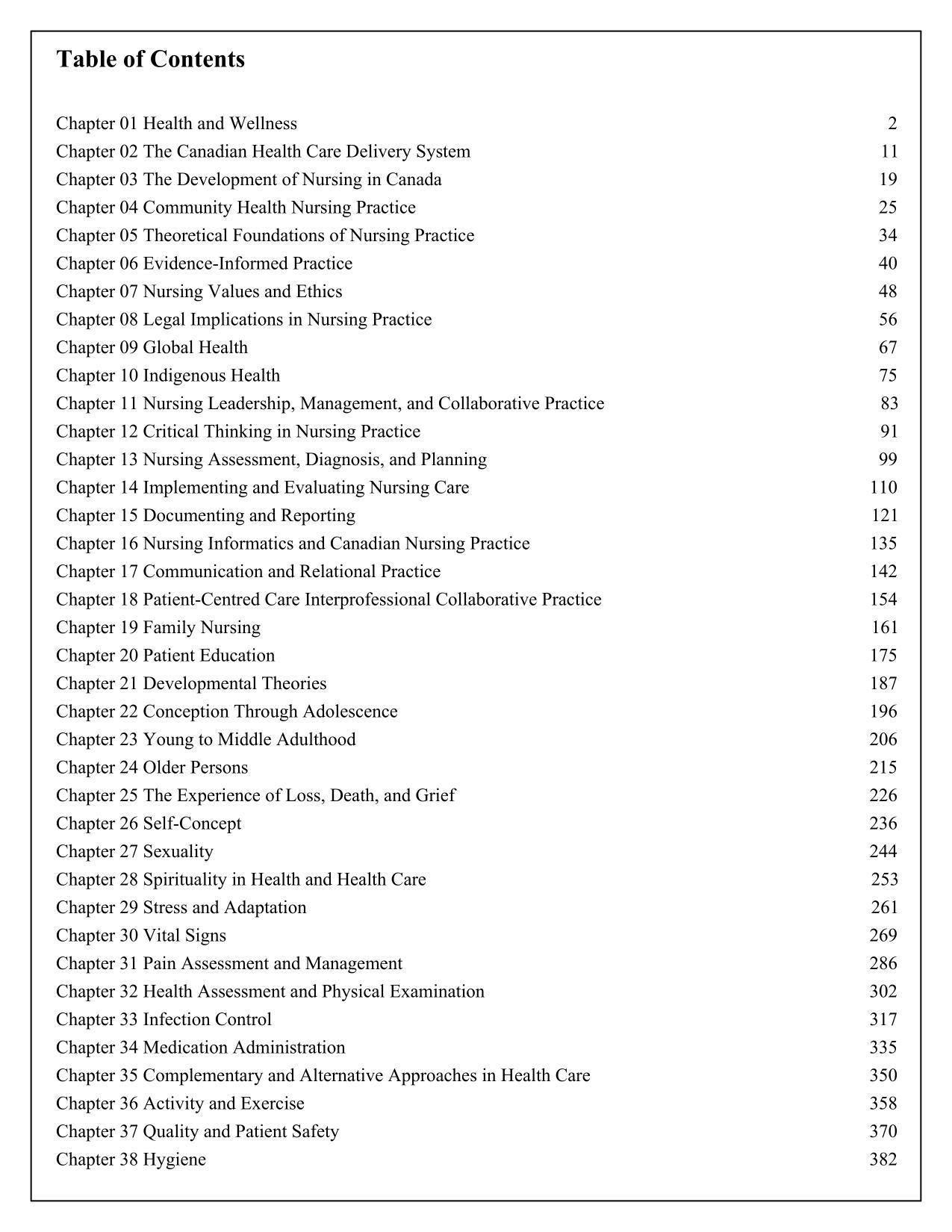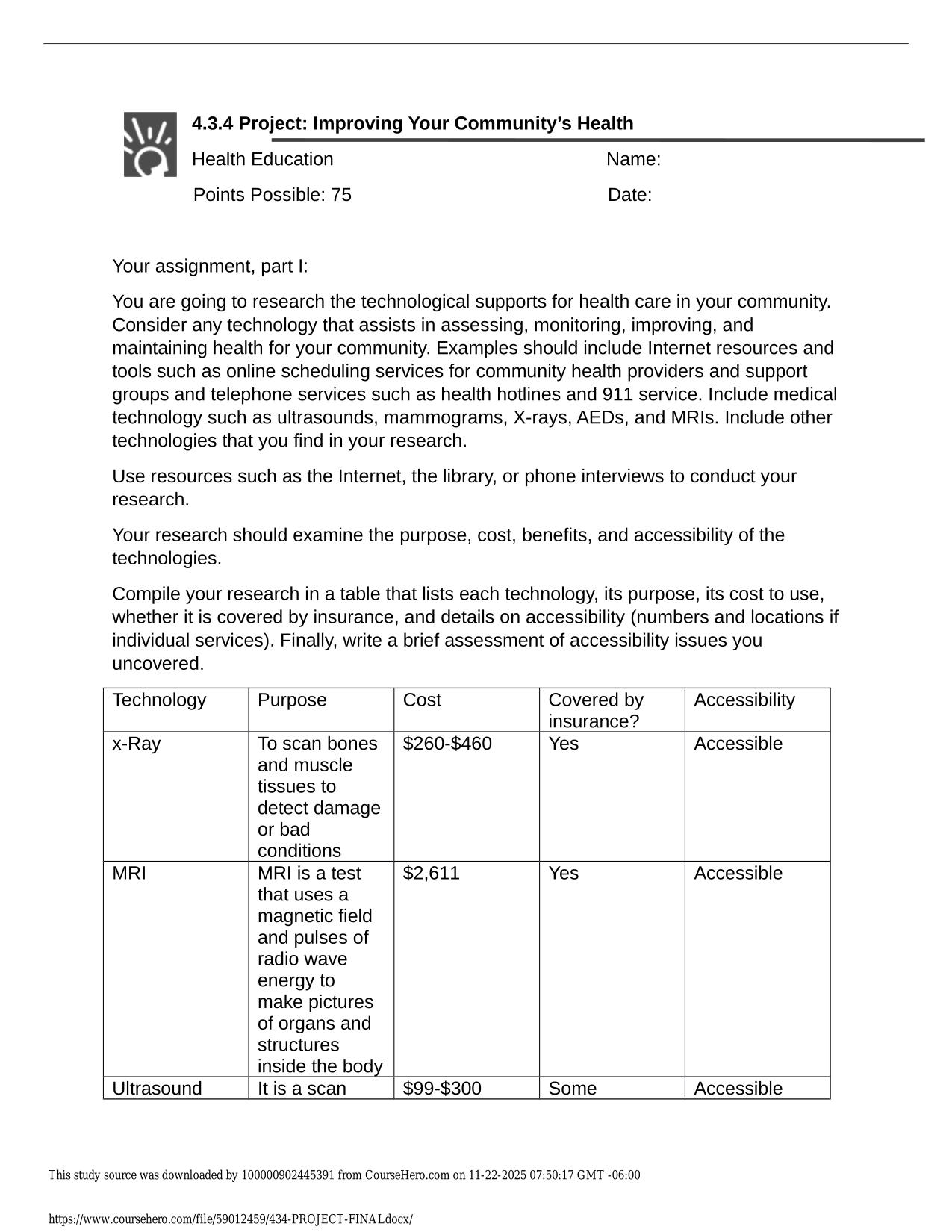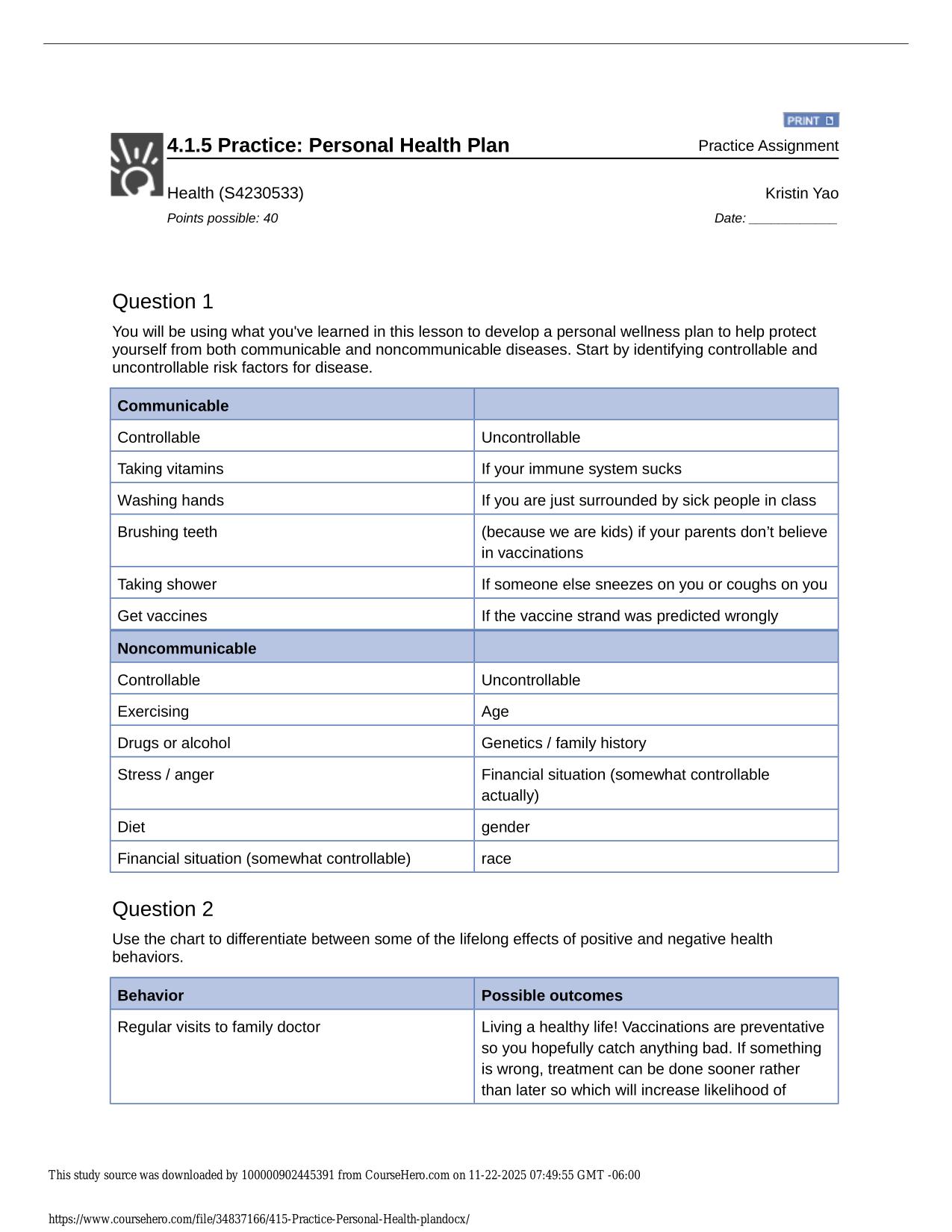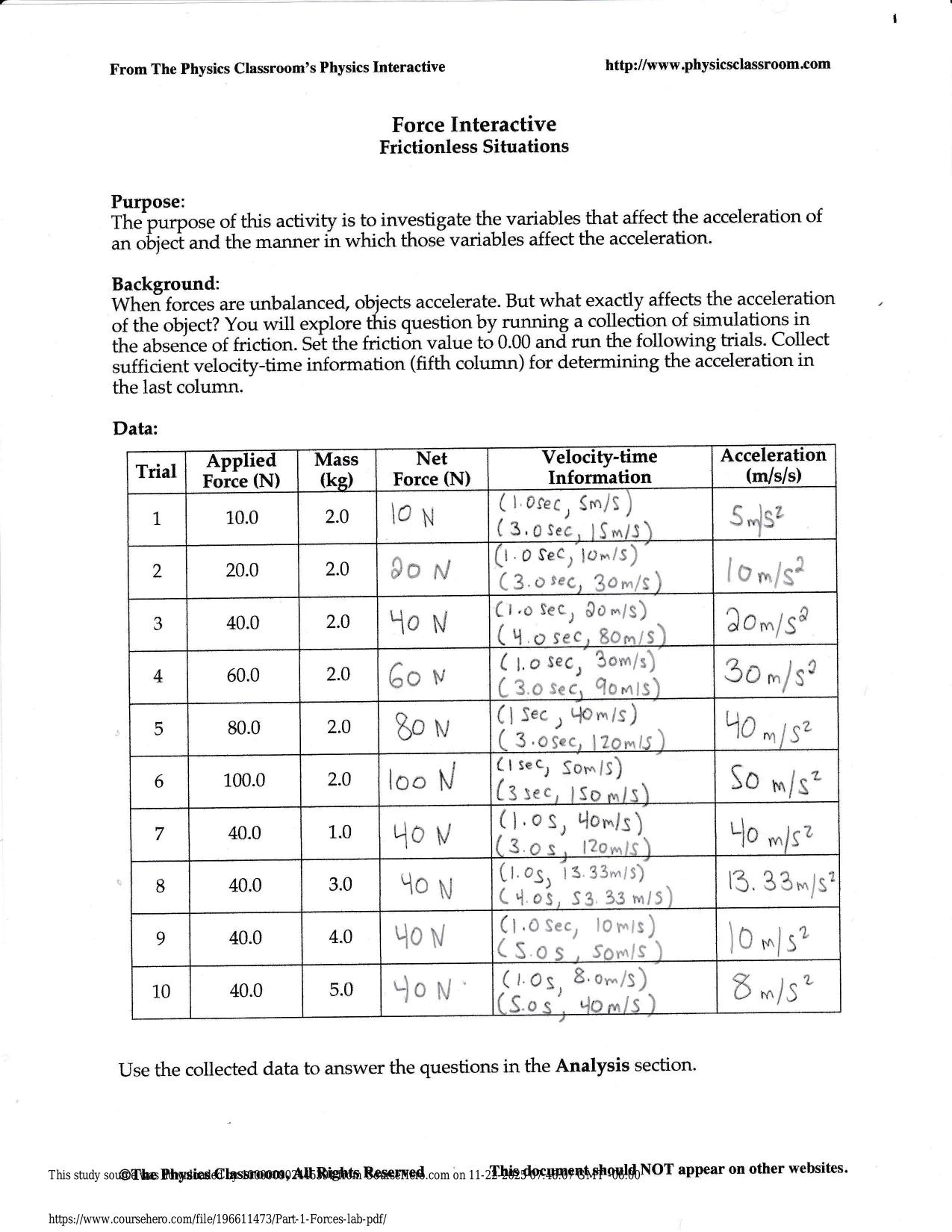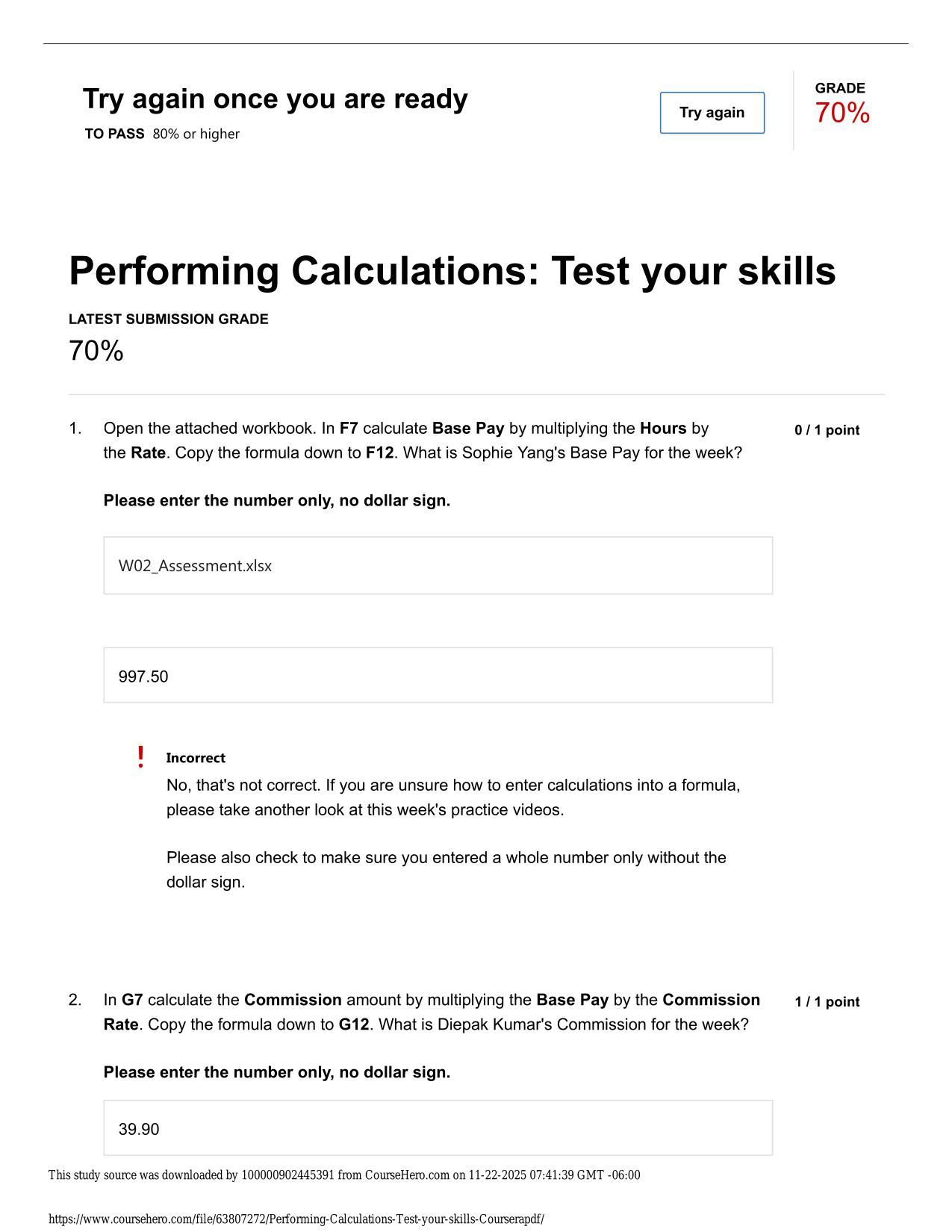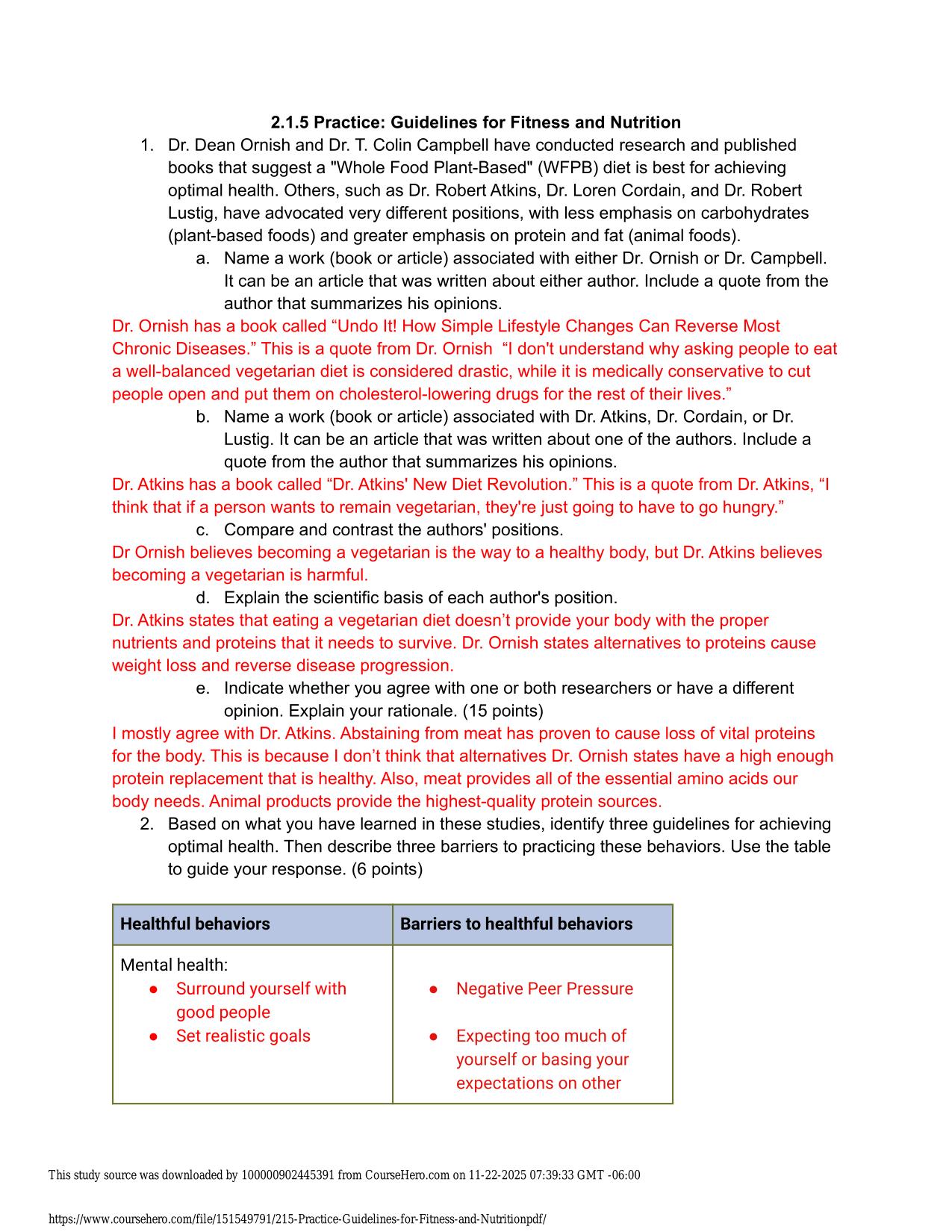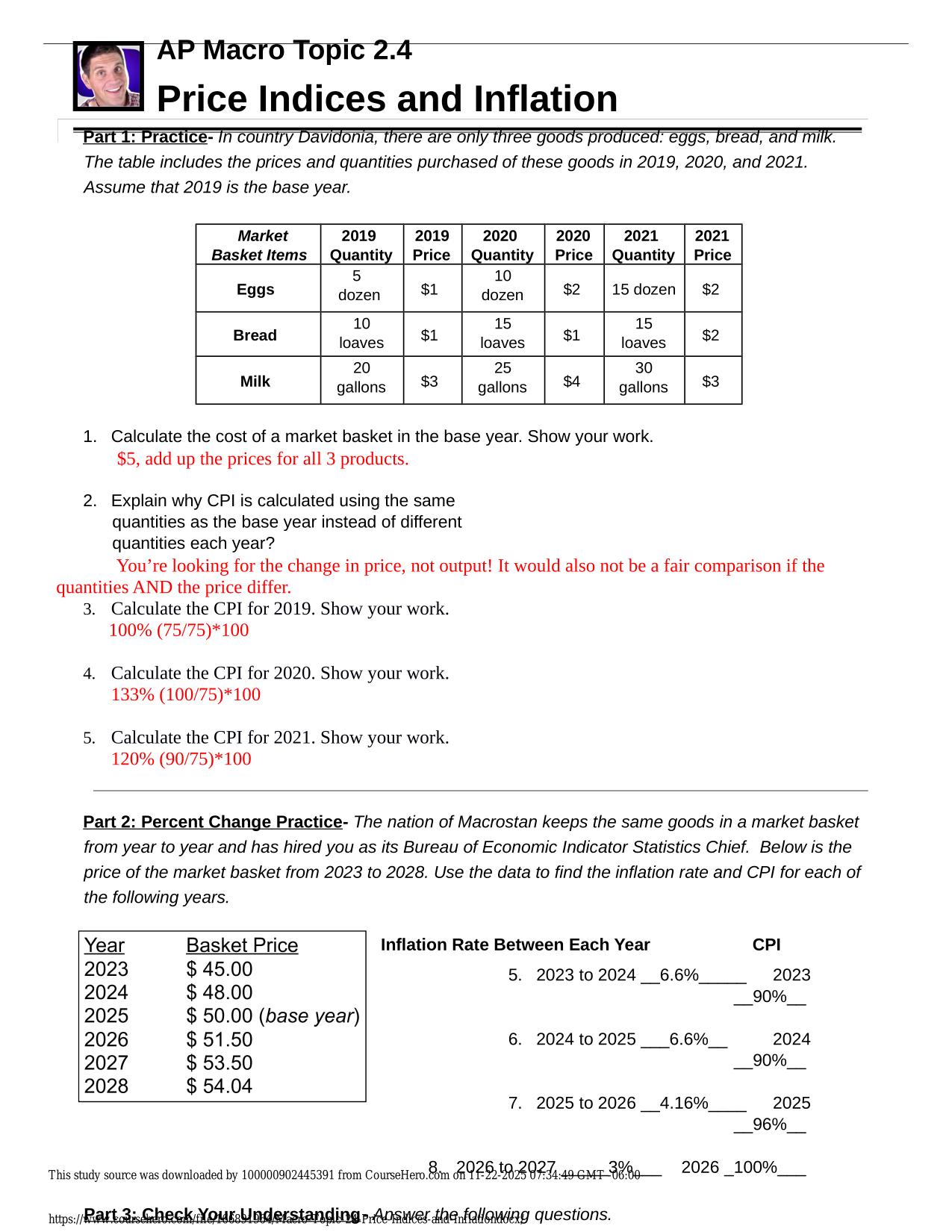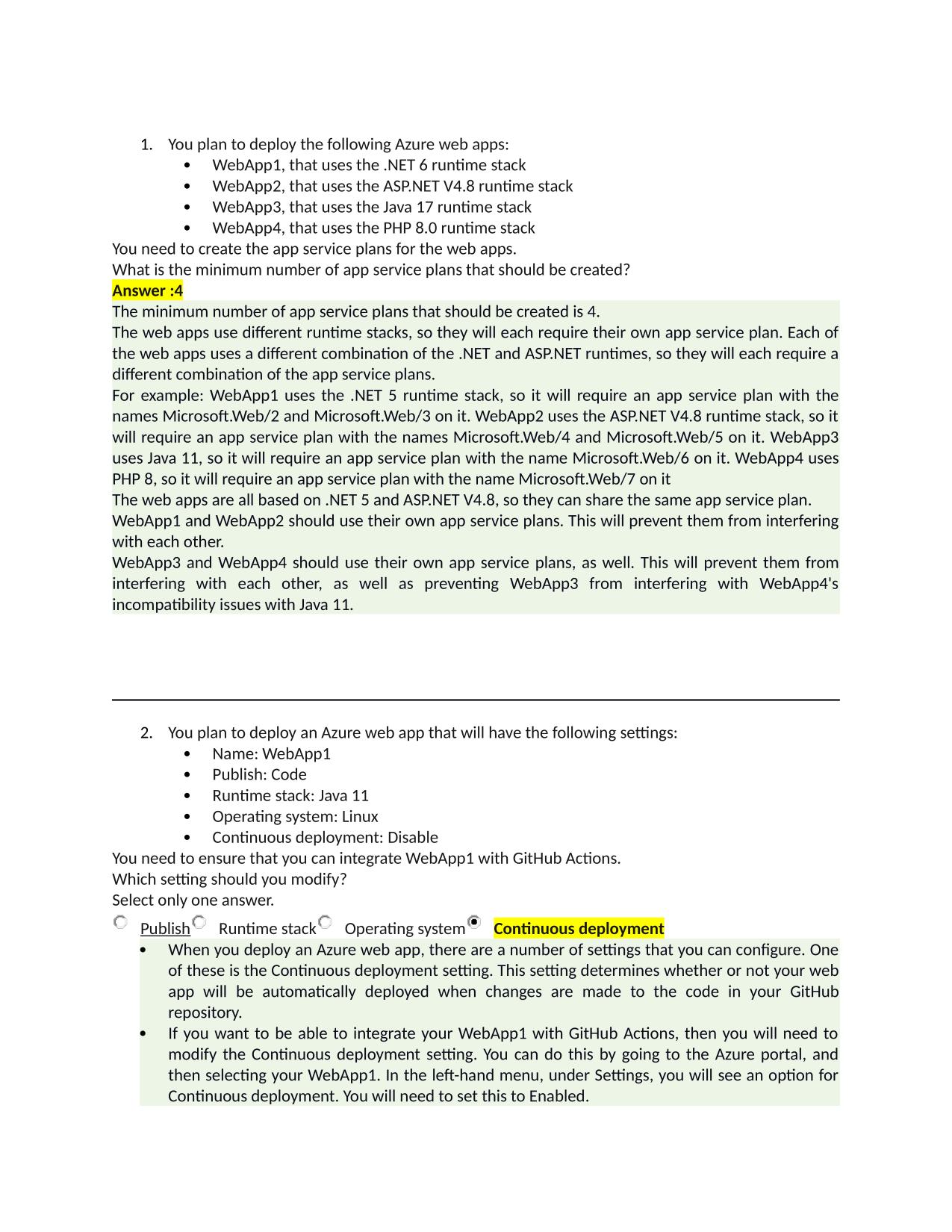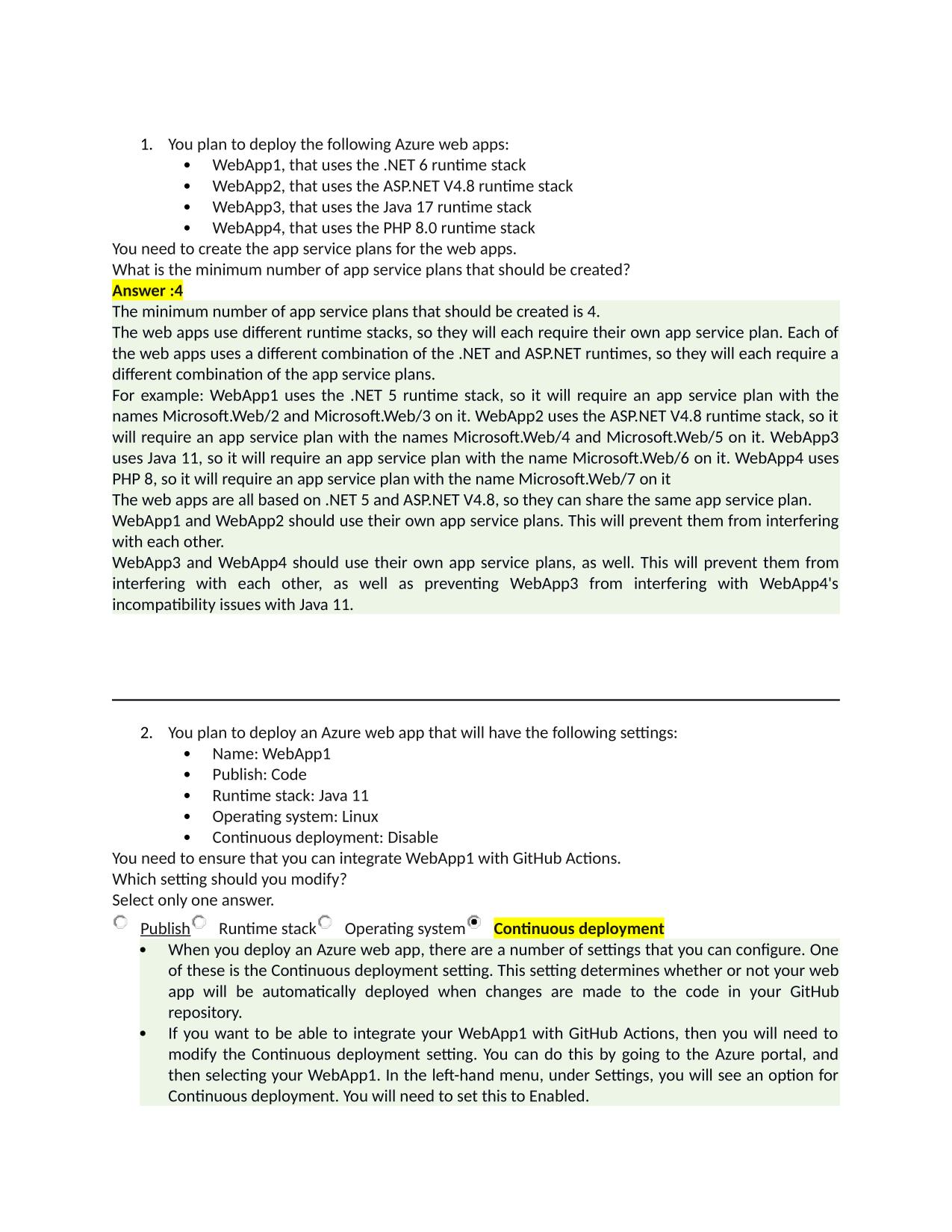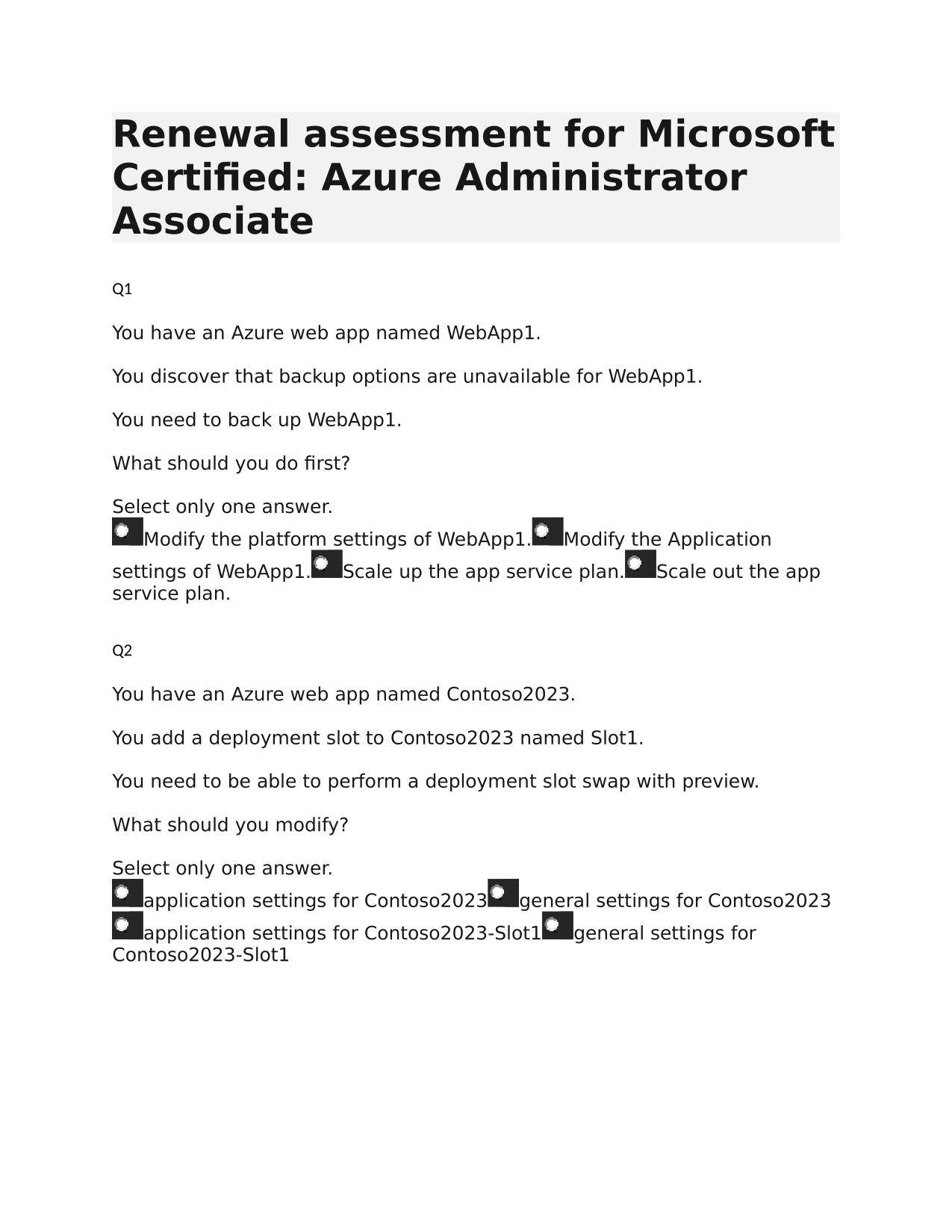Test Bank for Canadian Fundamentals of Nursing, 6th Edition by Potter, Perry | All 48 chapters covered
Course:
Canadian Fundamentals of Nursing
Institution:
Canadian Fundamentals of Nursing
Test Bank for Canadian Fundamentals of Nursing, 6th Edition by Potter, Perry | All chapters covered Table of Contents Chapter 01 Health and Wellness 2 Chapter 02 The Canadian Health Care Delivery System 11 Chapter 03 The Development of Nursing in Can...
After purchase, you get:
✅ Instant PDF Download
✅ Verified answer explanations
✅ Refund if not Satisfied
✅ Prepared for 2025/2026 test cycle
Overview
Repeating themes and reinforced ideas help solidify long-term memory retention. Key concepts reappear in different contexts, helping cement them in your memory through varied exposure. This spaced repetition is particularly effective for building the quick recall needed during timed exams. Many learners find they remember material better weeks or even months later thanks to this reinforcement strategy.
Who Is This For?
Suitable for academic programs, tutoring sessions, and exam bootcamps focusing on Canadian Fundamentals of Nursing and Testbank fundamentals. Educators find it saves them preparation time while ensuring quality content. The material adapts well to different teaching environments.
Related Keywords
Detailed Study Description
Frequently Asked Questions
Document Information
| Uploaded on: | November 1, 2025 |
| Last updated: | November 17, 2025 |
| Number of pages: | 553 |
| Written in: | 2025/2026 |
| Type: | Exam (elaborations) |
| Contains: | Questions & Answers |
| Tags: | Test Bank for Canadian Fundamentals of Nursing, 6th Edition by Potter, Perry | All chapters covered Table of Contents Chapter 01 Health and Wellness 2 Chapter 02 The Canadian Health Care Delivery System 11 Chapter 03 The Development of Nursing in Canada 19 Chapter 04 Community Health Nursing Practice 25 Chapter 05 Theoretical Foundations of Nursing Practice 34 Chapter 06 Evidence-Informed Practice 40 Chapter 07 Nursing Values and Ethics 48 Chapter 08 Legal Implications in Nursing Practice 56 Chapter 09 Global Health 67 Chapter 10 Indigenous Health 75 Chapter 11 Nursing Leadership, Management, and Collaborative Practice 83 Chapter 12 Critical Thinking in Nursing Practice 91 Chapter 13 Nursing Assessment, Diagnosis, and Planning 99 Chapter 14 Implementing and Evaluating Nursing Care 110 Chapter 15 Documenting and Reporting 121 Chapter 16 Nursing Informatics and Canadian Nursing Practice 135 Chapter 17 Communication and Relational Practice 142 Chapter 18 Patient-Centred Care Interprofessional Collaborative Practice 154 Chapter 19 Family Nursing 161 Chapter 20 Patient Education 175 Chapter 21 Developmental Theories 187 Chapter 22 Conception Through Adolescence 196 Chapter 23 Young to Middle Adulthood 206 Chapter 24 Older Persons 215 Chapter 25 The Experience of Loss, Death, and Grief 226 Chapter 26 Self-Concept 236 Chapter 27 Sexuality 244 Chapter 28 Spirituality in Health and Health Care 253 Chapter 29 Stress and Adaptation 261 Chapter 30 Vital Signs 269 Chapter 31 Pain Assessment and Management 286 Chapter 32 Health Assessment and Physical Examination 302 Chapter 33 Infection Control 317 Chapter 34 Medication Administration 335 Chapter 35 Complementary and Alternative Approaches in Health Care 350 Chapter 36 Activity and Exercise 358 Chapter 37 Quality and Patient Safety 370 Chapter 38 Hygiene 382 Chapter 39 Cardiopulmonary Functioning and Oxygenation 401 Chapter 40 Fluid, Electrolyte, and Acid–Base Balances 417 Chapter 41 Sleep 433 Chapter 42 Nutrition 441 Chapter 43 Urinary Elimination 457 Chapter 44 Bowel Elimination 472 Chapter 45 Mobility and Immobility 485 Chapter 46 Skin Integrity and Wound Care 503 Chapter 47 Sensory Alterations 523 Chapter 48 Care of Surgical Patients 534 |
Seller Information

AdelineJean
User Reviews (0)
Exam (Elaborations)
$18.00
Add to Cart
100% satisfaction guarantee
Refund Upon dissatisfaction
Immediately available after purchase
Available in Both online and PDF
$18.00
| 0 sold
Discover More resources
Inside The Document
TEST BANK Canadian Fundamentals of Nursing Patricia A. Potter, Anne Griffin Perry, Patricia A. Stockert, Amy Hall, Barbara J. Astle & Wendy Duggleby 6th Edition TBSM.WS@YAHOO.COM Table of Contents Chapter 01 Health and Wellness Chapter 02 The Canadian Health Care Delivery System Chapter 03 The Development of Nursing in Canada Chapter 04 Community Health Nursing Practice Chapter 05 Theoretical Foundations of Nursing Practice Chapter 06 Evidence-Informed Practice Chapter 07 Nursing Values and Ethics Chapter 08 Legal Implications in Nursing Practice Chapter 09 Global Health Chapter 10 Indigenous Health Chapter 11 Nursing Leadership, Management, and Collaborative Practice Chapter 12 Critical Thinking in Nursing Practice Chapter 13 Nursing Assessment, Diagnosis, and Planning Chapter 14 Implementing and Evaluating Nursing Care Chapter 15 Documenting and Reporting Chapter 16 Nursing Informatics and Canadian Nursing Practice Chapter 17 Communication and Relational Practice Chapter 18 Patient-Centred Care Interprofessional Collaborative Practice Chapter 19 Family Nursing Chapter 20 Patient Education Chapter 21 Developmental Theories Chapter 22 Conception Through Adolescence Chapter 23 Young to Middle Adulthood Chapter 24 Older Persons Chapter 25 The Experience of Loss, Death, and Grief Chapter 26 Self-Concept Chapter 27 Sexuality Chapter 28 Spirituality in Health and Health Care Chapter 29 Stress and Adaptation Chapter 30 Vital Signs Chapter 31 Pain Assessment and Management Chapter 32 Health Assessment and Physical Examination Chapter 33 Infection Control Chapter 34 Medication Administration Chapter 35 Complementary and Alternative Approaches in Health Care Chapter 36 Activity and Exercise Chapter 37 Quality and Patient Safety Chapter 38 Hygiene TBSM.WS@YAHOO.COM 2 11 19 25 34 40 48 56 67 75 83 91 99 110 121 135 142 154 161 175 187 196 206 215 226 236 244 253 261 269 286 302 317 335 350 358 370 382 Chapter 39 Cardiopulmonary Functioning and Oxygenation Chapter 40 Fluid, Electrolyte, and Acid–Base Balances Chapter 41 Sleep Chapter 42 Nutrition Chapter 43 Urinary Elimination Chapter 44 Bowel Elimination Chapter 45 Mobility and Immobility Chapter 46 Skin Integrity and Wound Care Chapter 47 Sensory Alterations Chapter 48 Care of Surgical Patients TBSM.WS@YAHOO.COM 401 417 433 441 457 472 485 503 523 534 Test Bank - Canadian Fundamentals of Nursing, 6e (Potter, Perry, 2019) ______________________________________________________________________________________________ Chapter 01: Health and Wellness Potter et al: Canadian Fundamentals of Nursing, 6th Edition MULTIPLE CHOICE 1. The nurse is using the population health promotion model to develop actions for improving health. After asking, “On what should we take action?”; “How should we take action?”; and “Why should we take action?” the nurse will ask which of the following questions? a. “With whom should we act?” b. “When should we take action?” c. “Which government should take action?” d. “Where should we first act?” ANS: A The next question to ask when using the population health model approach is “With whom should we act?” The other choices are not questions included in this model. DIF: Apply REF: 13 (Figure 1-5) OBJ: Contrast distinguishing features of health promotion and disease prevention. TOP: Implementation MSC: NCLEX: Health Promotion and Maintenance 2. The principle “Health promotion is multisectoral” means which of the following? a. Relationships between individual, social, and environmental factors must be recognized. b. Physical, mental, social, ecological, cultural, and spiritual aspects of health must be recognized. c. In order to change unhealthy living and working conditions, areas other than health must also be involved. d. Health promotion uses knowledge from disciplines such as social, economic, political, environmental, medical, and nursing sciences, as well as from first-hand experience. ANS: C The statement “Health promotion is multisectoral” is the principle explained by the necessity to involve areas other than health in order to change unhealthy living and working conditions. DIF: Understand REF: 11 OBJ: Contrast distinguishing features of health promotion and disease prevention. TOP: Planning MSC: NCLEX: Health Promotion and Maintenance 3. According to the World Health Organization, what is the best description of “health”? a. Simply the absence of disease. b. Involving the total person and environment. c. Strictly personal in nature. d. Status of pathological state. ANS: B ______________________________________________________________________________________________ 1|Page TBSM.WS@YAHOO.COM
CourseHero & Studypool Unlocks
Get Unlocked CourseHero and Studypool documents files instantly to your email, simply by pasting your link and clicking "Unlock Now". Learn more on how to unlock here.

